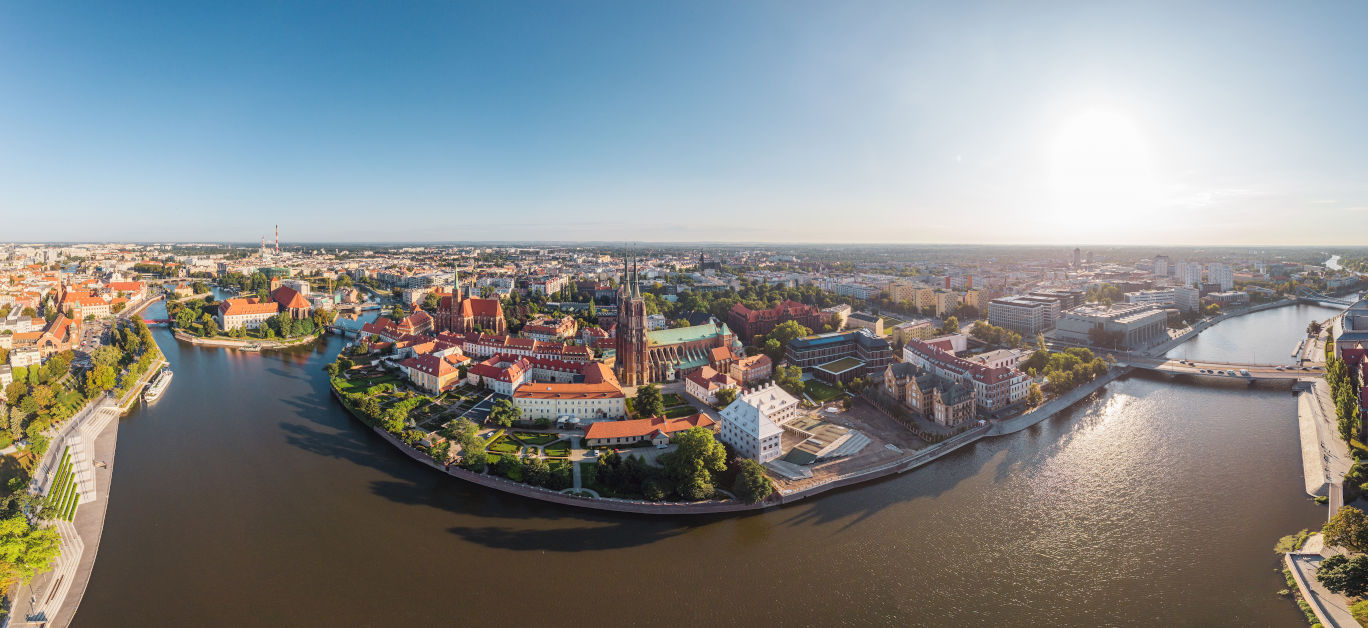Visitors to Poland will discover a country bursting with historical sites, from medieval walled towns and fairy tale castles, but also poignant memorials to the pivotal role that Poland played in World War II. With picturesque cities to explore and spectacular scenery as a backdrop, the country offers a wealth of diverse experiences, and travellers can choose from a wide variety of accommodation, from luxury city hotels to mountainside retreats.
LLM writer Chloe Govan takes us on a step-by-step guide to the very best attractions that Poland has to offer – starting in the northern city of Gdansk and ending with the little Venice vibes of south-westerly Wroclaw.
Gdansk: The city of amber
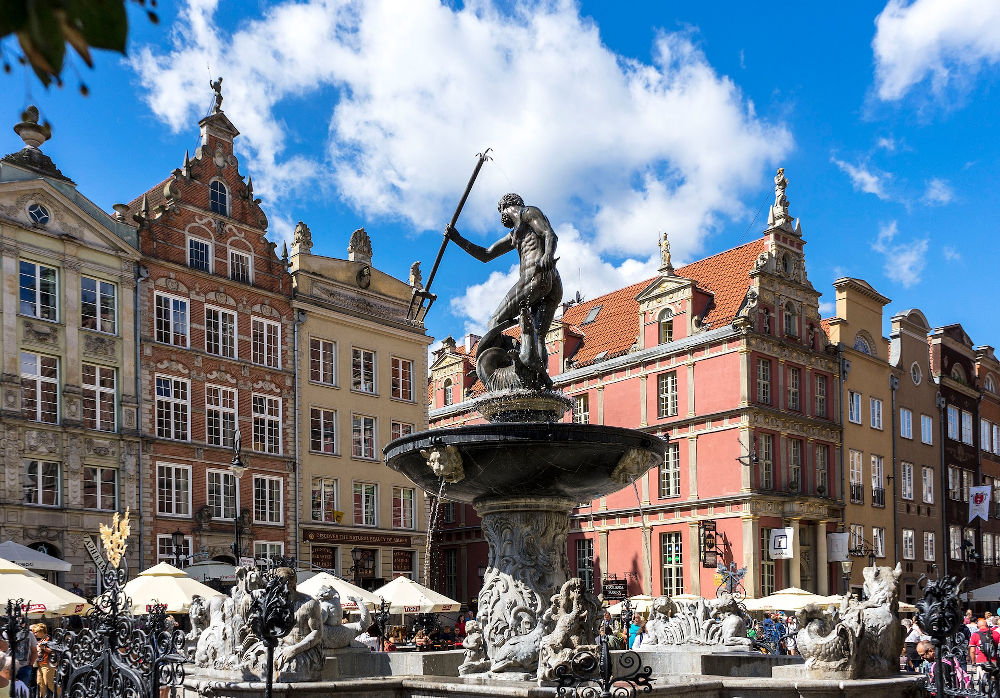
This was the one city in Europe so highly sought after by the Nazis that they started the Second World War over it.
Historically the wealthiest part of Poland, boasting extravagant eastern architecture in a variety of rainbow colours, Gdansk has been especially prized for its amber jewellery. There’s even a museum detailing the gem’s history and displaying everything from amber-infused guitars and violins to slabs of it with fossilised moths and dragonflies trapped inside. As if to prove that the organisers had a sense of humour, the adjoining building also houses the city’s prison tower and torture chamber, accessed by a winding stone staircase. Be sure to check out the high security cell named ‘Cain and Abel’, where the city’s most fearsome detainees were once held.
If you’re lusting after a luxury purchase, there are numerous authentic amber stores in town where visitors can watch the precious stones being processed and transformed into beautiful jewellery before their eyes.
Besides that, the compelling and highly recommended Museum of The Second World War commemorates Gdansk as the city where the first shots rang out, signalling the start of the six-year battle. This location was the place Nazis were so determined to conquer that they were willing to spark the conflict that ultimately killed an estimated 75 million people. An entire day needs to be devoted to the exhibits here to fully do them justice. Visitors can also see the Old Post Office, where the infamous siege took place, plus the European Solidarity Centre, telling of how the Communists – the successors of the Nazis – eventually fell, leading to Polish emancipation.
A few days will be needed for all the above activities, plus a boat trip and strolls around the old town. One word of warning – if you’re sensitive to the cold, either allocate a trip here to the spring/summer season or wrap up warm, as bitterly cold Baltic winds can cause extreme weather conditions in the winter.
Where to stay in Gdansk
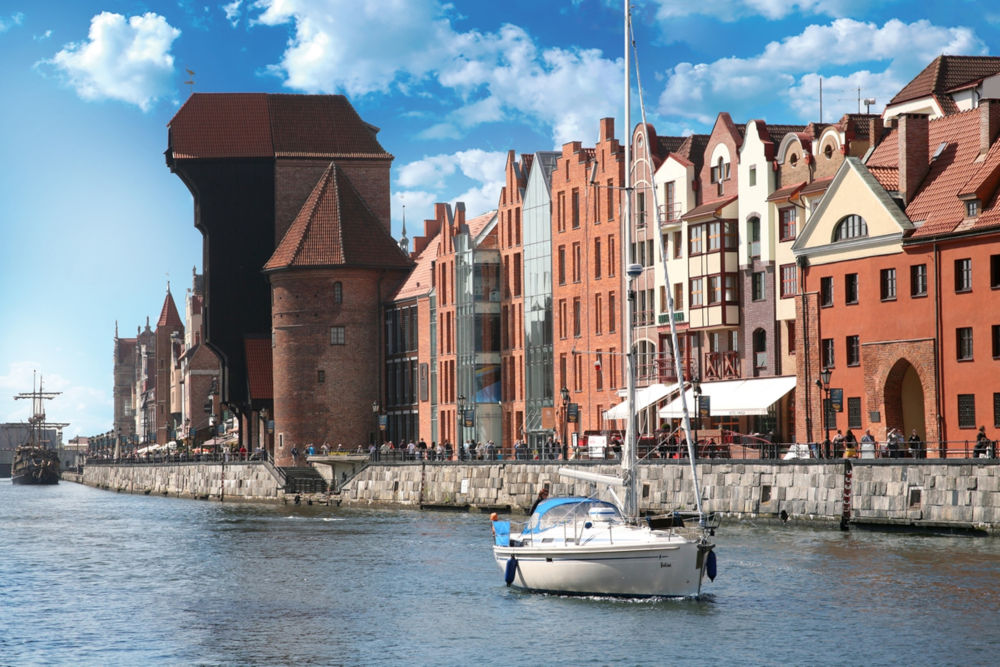
Set right by the yacht marina and boasting its own onsite brewery, the simply named Hotel Gdansk promises the ‘best beer’ – not to mention the most sensational views – in the entire city. Within seconds of leaving the hotel, visitors arrive at the lively waterfront, with its ample range of restaurants serving everything from fresh seafood catches to duck and dumplings. The location could scarcely be more central – and the interior offers uncompromised five-star luxury. The in-house restaurant serves up three varieties of Polish beer freshly brewed on the premises, with Brovarnia being a firm favourite. There’s also a whisky bar, with 50 varieties from across the globe. Spacious rooms boast striking decor and there’s also an on-site medispa for downtime.
An honourable mention also goes to Hotel Hanza, a few minutes’ walk away on the other site of the river. Another charming residence with a delicious restaurant and beautiful views from the windows of the rooms, it boasts a wellness centre with three massage rooms – and it’s well worth a stay too.
(Gdansk to Torun – 1h45 by car)
Torun: The jewel of the north
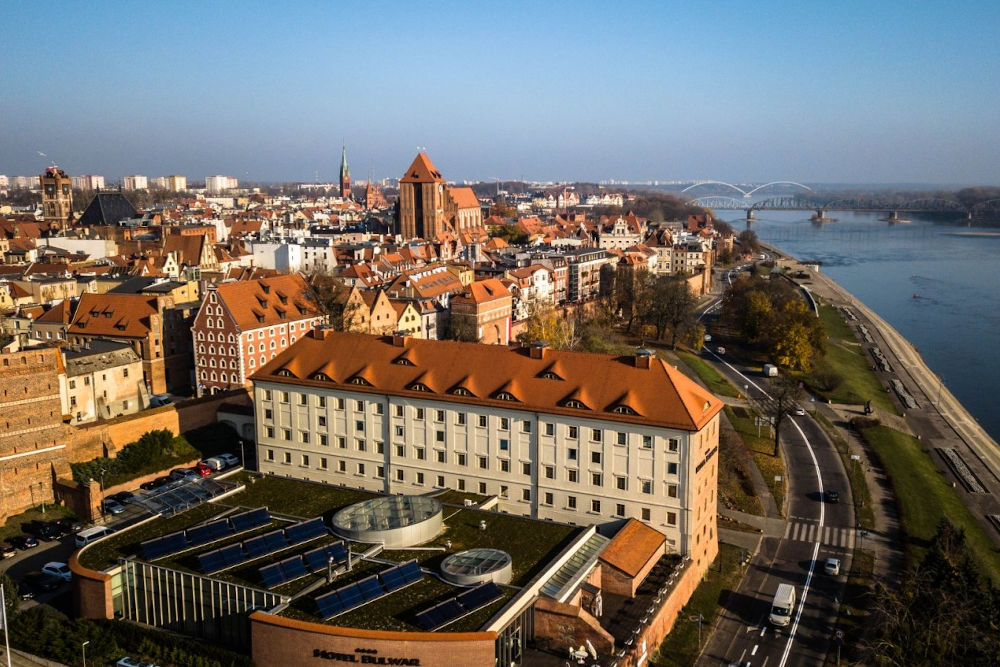
Criminally under-publicised, Torun is the unsung hero of the north and, unbeknown to many travellers, boasts some of the best beauty spots in the country.
The medieval walled town is one of the very few places in Poland left totally unscathed by the battles of the Second World War. It’s said the Germans decided not to bomb or damage this town because they wanted to keep it totally intact for themselves. As a consequence, it is extraordinarily well preserved and has remained true to its medieval roots. It has even gained UNESCO World Heritage Status yet remains out of sight on many touristic itineraries.
Here, it’s possible to visit the house of famous astronomer Copernicus, whose discovery that the planets revolve around the sun changed the world. He published his theories while on his deathbed – and perhaps it’s just as well that he waited so long, as when Galileo later tried to repeat and build on his ideas, the Catholic Church was so offended that they forbade him to leave his home. Besides the controversial astronomer and the museum dedicated to him, Torun is also famous for its gingerbread, which visitors can sample, purchase and even try to recreate for themselves at the Museum of Gingerbread.
One of the best attractions of all though is simply to experience strolling through the streets and admiring the unique architecture, not to mention stopping off at the spectacular ruins of the town’s Teutonic fort, dating back to the 13th century. The security here was so good that the castle, in the underground vaults of which knights stashed food supplies in case of a siege, was never conquered by a single invader.
Then there’s the Town Hall Tower to climb up to for sweeping vistas, plus the Leaning Tower of Torun to catch a glimpse of – perhaps not quite as towering as its counterpart in Pisa, but quirky nevertheless!
Where to stay in Torun
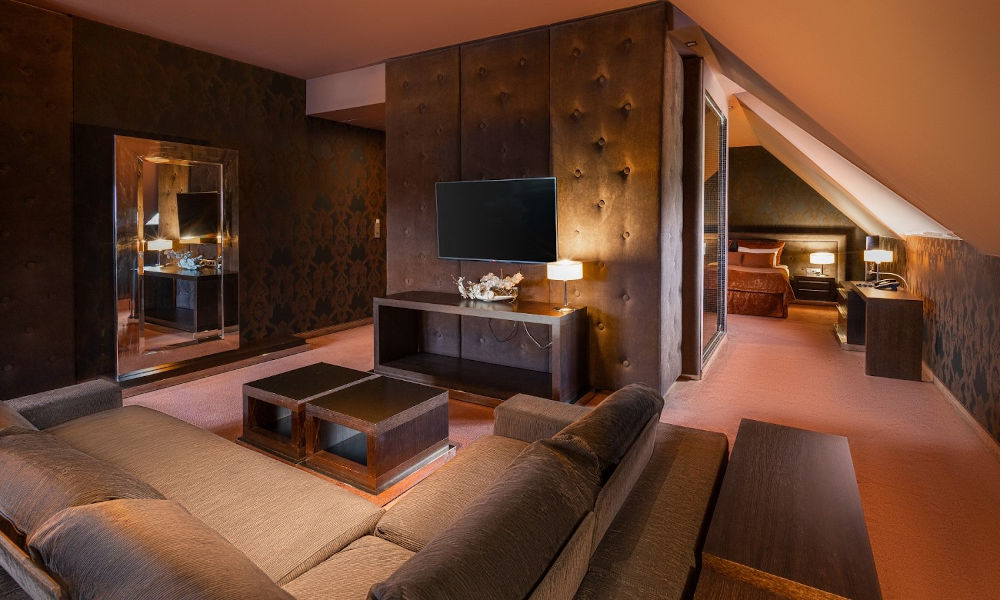
Torun is arguably the most picturesque town in Poland, so an overnight stay is highly recommended – and Hotel Bulwar is an obvious choice. It enjoys a prime position within the medieval city walls, less than five minutes by foot from the old town’s market square. while the banks of the Vistula River are also within very easy reach. Originally created in the 1800s, the hotel was restored from ruins and the restaurant and underground car park still have preserved medieval walls intact. The atmospheric restaurant boasts a jet-black colour scheme, romantic low lighting delivered by monochrome lamps and delicious local dishes. All in all, it’s the perfect place to chill after a day of sight-seeing.
(Torun to Poznan – 2h18 by car)
Poznan: The founding city of Poland
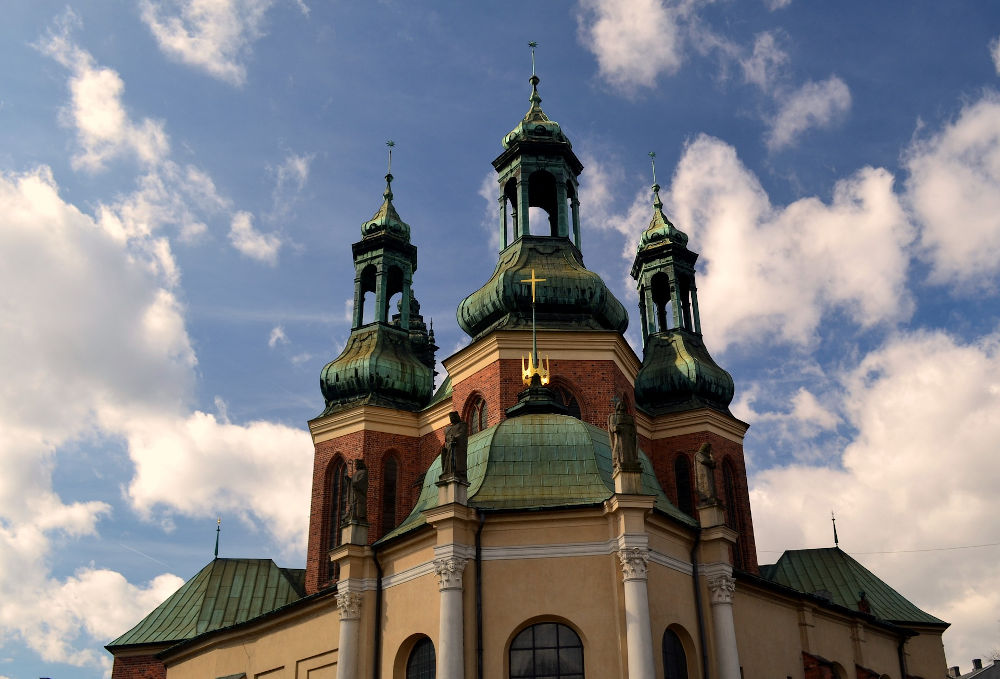
En route to Warsaw, take a break from fast-paced sight-seeing and pause in Poznan. A bustling city equidistant between Berlin and Warsaw, it was the location where, back in the 10th century, Poland was originally founded. It carries huge historical significance, despite its lack of big and brash tourist attractions. Here you’ll enjoy soaking up the classic colourful architecture that you’ll have come to expect from a Polish city by now. Try to hit the old town square in time for midday, when the town hall clock comes alive and mechanical goats ceremoniously bang their heads together 12 times to mark the hour.
Poznan boasts the oldest cathedral in the country, containing tomb fragments from early Polish kings in its crypt. For those with a sweet tooth, there’s also the Croissant Museum with guided baking demonstrations several times a day so foodies can join in and create their own. It’s not as easy as you think – a traditional Poznan croissant must be folded exactly 81 times and fashioned into the shape of a horseshoe. Plus, for some light-hearted fun, the town has a selfie museum, Be Happy, with colourful backdrops that will instantly bring an underwhelming Instagram feed to live.
Where to stay in Poznan
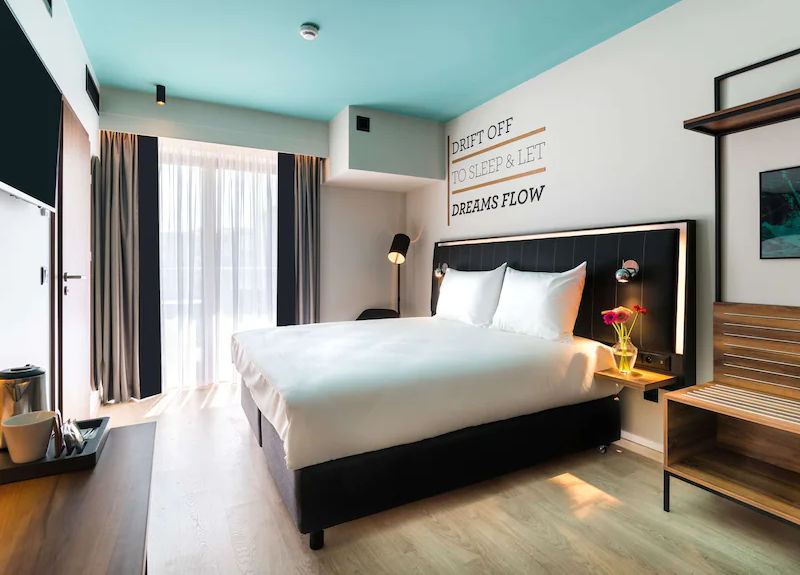
The best place to head to is the Radisson Park Inn, on a secluded cobbled side-street that’s quiet despite being just three minutes’ walk from a tram stop and five minutes’ walk from the old town market square. In the vicinity, modern Costa Coffee shops stand side-by-side with well-preserved buildings hundreds of years old, and the result is extremely photogenic! Within the hotel, friendly and welcoming staff are on hand in a lobby filled with guitars, basses and rock and roll artwork. There are rooms featuring balconies or terraces with city views and the interiors have uplifting self-improvement slogans emblazoned on the wall.
Within walking distance are the art frescoes of the Srodka district, including a musical one with 3D violins and microphones decorating the side of one building and dozens of other murals to spot at other locations too – ask staff for details. Fun, modern and arty, this hotel ticks all the right boxes – and their painstaking Covid safety measures are second to none, so you can stay with confidence.
(Poznan to Warsaw – 3h15 by car)
Warsaw: The phoenix city
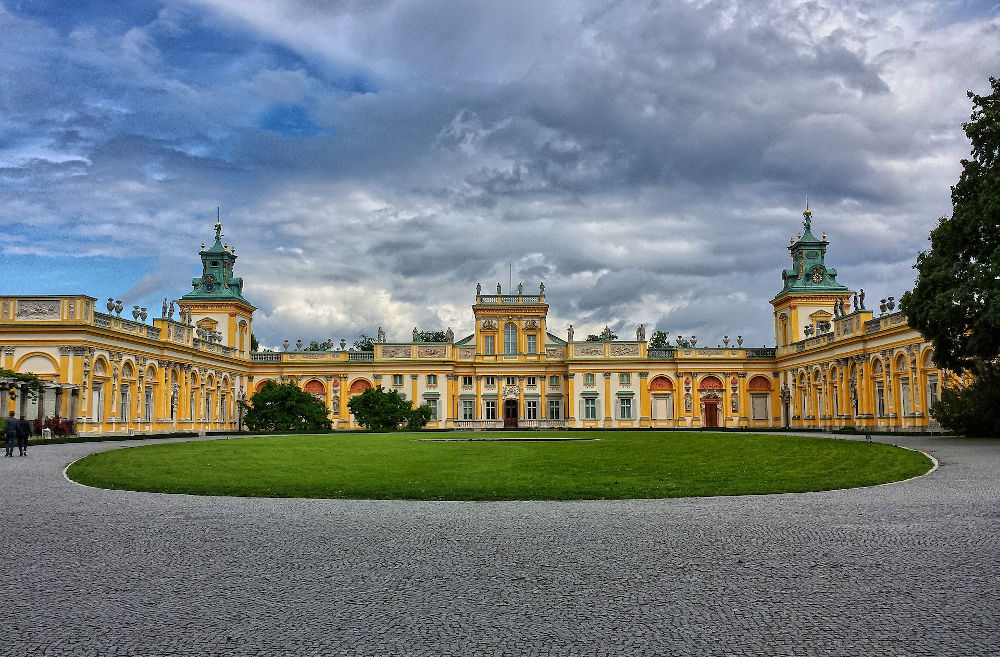
The vast majority of Poland’s capital was destroyed by Nazi invaders during the Second World War bombings, but it has risen like a phoenix from the ashes, hence its popular nickname, and has been rebuilt impressively to demonstrate its former glory.
Keys to the city’s devastating past can be found by visiting two main museums: the Warsaw Uprising Museum, which details the resistance movement Poles built against the Nazis and POLIN – the Museum of the History of Polish Jews – which traces their story through centuries of contribution to Polish culture up to the Holocaust and its bitter aftermath. Both are full-day excursions if you’re aiming to see everything.
For a glimpse into Warsaw’s regal past, take a short visit to its aesthetically pleasing Royal Castle, followed by the stunning bright yellow Wilanow Palace, one of the few buildings to survive the war without a single scratch. The latter is often named the Polish Versailles – and for good reason.
For a more light-hearted afternoon, the recently opened Selfie Museum, on the same street as the Uprising Museum, invites Instagrammers to pose against enchanting backdrops inspired by Katy Perry’s Candy Land, Alice in Wonderland and a variety of other themes. Jump on a swing shaped like a strawberry, pose with a unicorn that’s taller than you are and enjoy surrealist scenes with candy clouds and larger than life ice-creams and candy canes. This is the ultimate in kitsch, so you’ll either love it or hate it – but many will opt for the former.
Meanwhile, in stark contrast to the beautiful pre-war replica buildings of Castle Square, there is also a thriving commercial district with much more modern-looking, futuristic architecture. The central landmark of this district is the Palace of Culture and Science, the tallest building in Warsaw and the fifth tallest in Europe. With an imposing architectural style that blends Moscow with NYC, it’s much hated among many locals for the association it has to Soviet occupation and rule. It’s possible to join the queue to take an elevator to the top for panoramic city views, although for an alternative vista featuring the old town of Poland instead, it’s best to scale the bell tower atop St Anne’s Church. Meanwhile for a view of the Palace of Culture and Science itself, the Panorama Sky bar in the Marriott hotel offers tables right next to it.
There are many restaurants in Warsaw, with vast variations in quality. For the best culinary experience, head to the oldest restaurant the city has, which has been serving food to royalty since the 16th century. Famous actresses, models, kings and queens have all dined here under candlelight, the British Princess Anne Mountbatten-Windsor counts it as a favourite, and the food is second to none. From appetizers promising ‘the world’s most pink’ salmon tartare to desserts like the immensely chocolatey molten java cake topped with blueberries, plus the piece de resistance, its famous orange caviar and sturgeon dish as a main course, the menu is bursting with flavours.
Where to stay in Warsaw
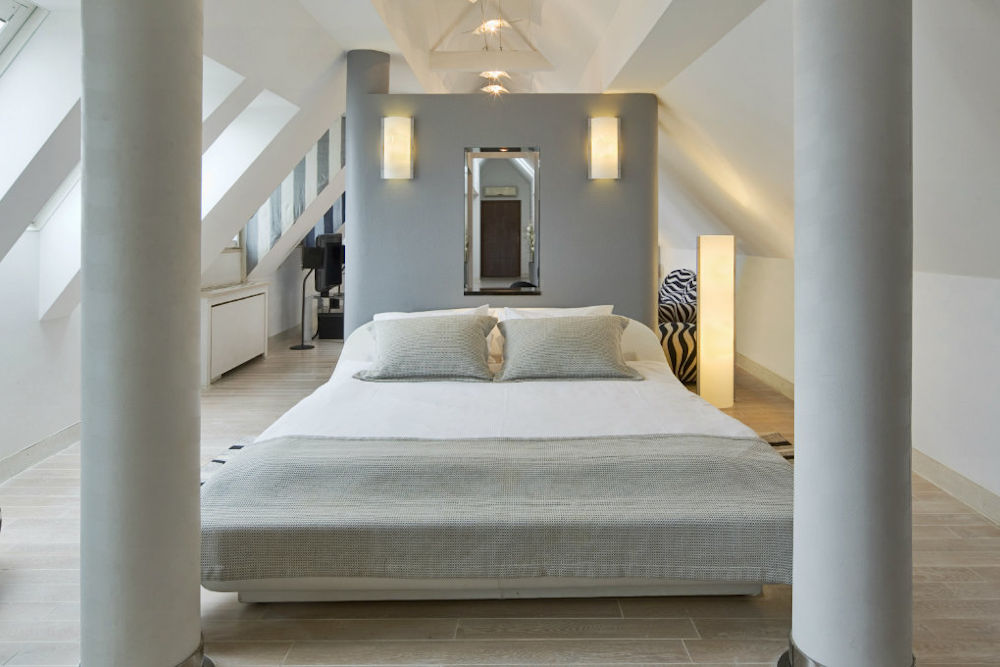
For romance, pick Mamaison Le Regina, located inside a restored 18th century palace just outside of the old town. It’s in a quiet street but next to a central location, and visitors can enjoy a short and very picturesque walk from the hotel to the old town’s main square, past the historic Barbican walls, which look and feel the ultimate in atmospheric by night-time light. Then after feasting at a restaurant, retreat back to the romantic seclusion of the hotel, with its indoor pool, sauna and gym.
Meanwhile, for those who want to be right at the heat of the action or close to the nightlife, Dom Literatury ticks all the boxes. The luxury here is the location, with in-room balconies that look out over the legendary Castle Square. Street musicians and entertainers can be enjoyed without having to so much as leave the comfort of your room, while the castle itself is in full view from the hotel. Plus, it’s the ONLY hotel in the city which boasts a direct view onto the famous King Sigismund’s Column. With just 13 rooms, it benefits from an intimate and personal atmosphere and serves home-cooked breakfasts in generous portion sizes. A perfect base for those seeking a lively introduction to the touristic part of the city.
Then there’s the Mercure Grand in the newer part of town, just 1km away from Central Station. Quite apart from the endearing fairy-tale looks of the old town and its replica vintage buildings in the touristic centre, this is where the locals hang out. It’s the modern commercial hub where the phoenix city was regenerated. The most famous spot on the skyline in this part of town is of course the Palace of Culture and Science, which gives the impression of looking onto a smaller version of the Empire State Building in ‘little New York’. Not far away is the Lazienki Park, with its flock of peacocks, and Nowy Swiat, one of the most popular shopping streets in the city.
Why not pick all three hotels – MaMaison for secluded luxury, Dom Literatury for its views on Castle Square and proximity to the nightlife and the Mercure for shopaholics, fashionistas and foodies wanting to venture beyond the tourist district and into the modern part of town? Spending some time in each location will demonstrate the varying vibes of the capital and help in getting to know it better.
(Warsaw to Krakow – 3h20 by car)
Krakow: The fairy-tale city
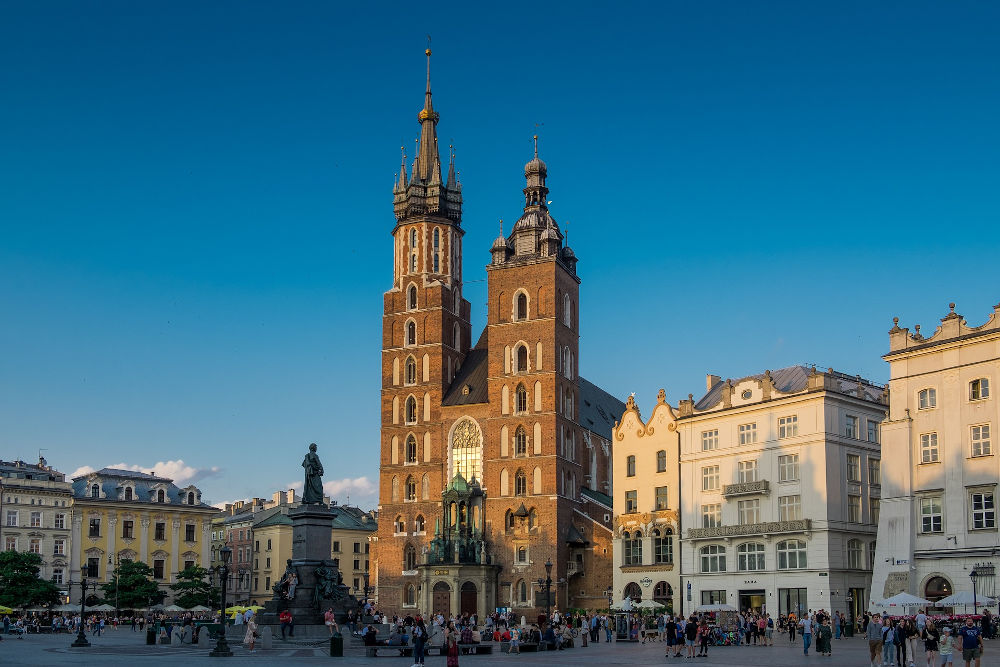
This is the ultimate magical city. Many of its centuries-old buildings were left totally unscathed during the war, so unlike Warsaw – which crashed and burned, then went through a total transformation – it has maintained an authentically retro vibe. Wandering the streets admiring the architecture, climbing to the top of the tower above the landmark St Mary’s Basilica and picking up a souvenir in the Cloth Hall, where goods have been traded since the 1300s, are all musts.
Meanwhile the dainty Wawel Castle near the riverbank, with its lavish tapestries, beautiful exterior and fire-breathing dragon statue is worth a visit too – and cruises on the river can be selected afterwards.
Of course, a visit to Krakow would be incomplete without examining its tragic darker past too. A poignant, though harrowing, way of exploring it would be to take a day trip to Auschwitz, the infamous concentration camps where millions of Jews were murdered by Nazi occupiers during the war. Guided tours show everything from the ruins of the gas ovens to the suitcases and shoes of the sadly departed. The experience may not be suitable for young children.
Within the city itself, there are many more memorials to Jewish history. Visitors can see Schindler’s Factory, the old enamel factory where the famous Schindler kept Jews out of Nazi clutches by offering them employment. It is now a museum, along with the Eagle Pharmacy which is located within what was once the closed walls of the ghetto. It was the only place available in warring times where Jews could buy medicines and hair dye (vital to cover greys so they would not be viewed as ‘old’ and therefore selected for the journey to the death camps and certain extermination.)
A Jewish walking tour is highly recommended too, covering all of the major sights including the square where selections were made for who would be departing to Auschwitz. The chairs they would sit in are still present in the square as a memorial. Also in the Jewish Quarter, where some buildings are still scarred by bullet holes, is the Galicia Jewish Museum, commemorating all those lost in the Holocaust. Recent exhibitions here included one dedicated to the imagination of Jewish children’s illustrator Jan Szancer, who used the world of fairy tales and make believe for escapism and to ward off depression during challenging times.
Where to stay in Krakow
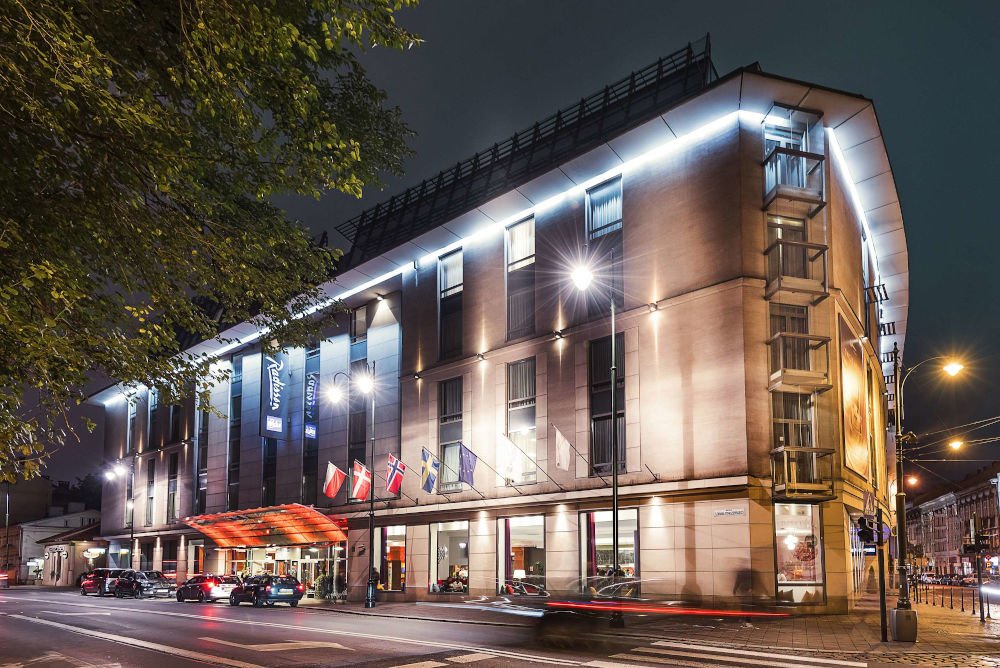
The Sheraton Grand is perfectly located right next to the Wawel castle, the grounds of which can be explored from as early as 6am, before any of the tourist crowds arrive.
The food here is faultless, with three-course cooked breakfasts offering a choice from an extensive menu at every stage and delivered direct to your table. Comparable in quality and style to that of the Wolseley in London, early morning dishes here – especially the omelettes – are sublime. Generous mid-afternoon buffets are often laid on too. No matter what time of day, you’re sure to find some of the best food in the city. An impeccable choice for a relaxing, luxurious stay.
Closer to the old town, the Radisson Blu also offers a change of vibe, positioned next to a tram stop and directly opposite a tranquil park, although it’s also within easy walking distance of the attractions of the main square. Some excellent in-room views are available of St Mary’s Basilica on the skyline and the clip-clop of hooves can regularly be heard by day from horses and carts transporting guests around the city. For diversity, why not try both hotels.
(Krakow to Zakopane – 2h by car)
Zakopane: The mountain idyll
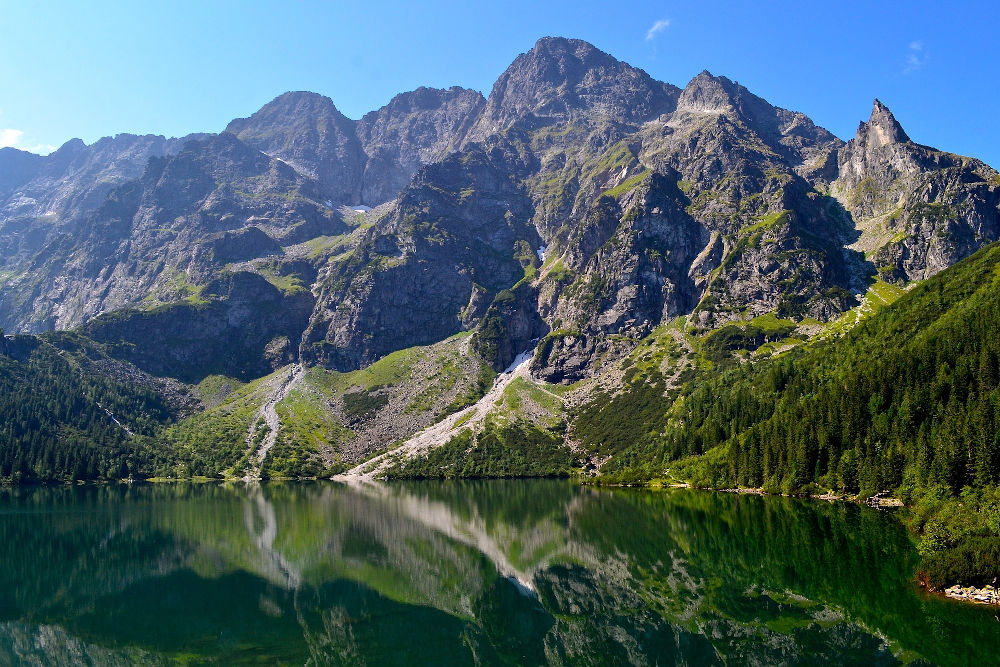
Venturing almost two hours south of Krakow, you’ll be rewarded with crisp, fresh, mountain air and spectacular views of the Tatras. Most walking enthusiasts will love taking on the trek to Morskie Oko, a spectacular lake translating in English to ‘Eye of the Sea’. Visitors can either walk there from the base of the trail or take a horse and cart ride part of the way. Be warned that the equine ‘taxi rank’ will be out of action if it’s time for them to guzzle a quick lunch, although if you do choose to use horse-transport, it cuts down what would otherwise be a round trip of more than six hours. The horses seem well-treated and genuinely energetic but it’s vital to use your own discretion. Morskie Oko is the most famous walk here, although the national park contains over 275km of trails, so for dedicated walkers, it’d be possible to spend weeks at a time here without running out of land.
For those who prefer to keep their feet rested, there are incredible views to be had without any of the exertion by taking one of the oldest cable cars in Europe up to Kasprowy Wierch. Enjoying snow-capped mountain scenery is the joy here, while hiking trails (and ski slopes in the winter) are available for those who want to explore further. Plus, in the town itself, quirky attractions include the surrealistic Upside-Down House and the Be Happy Selfie Museum. Meanwhile don’t miss the chance to sample Oscypek, a smoked cheese made from salted sheep milk which is exclusive to this region.
Where to stay in Zakopane
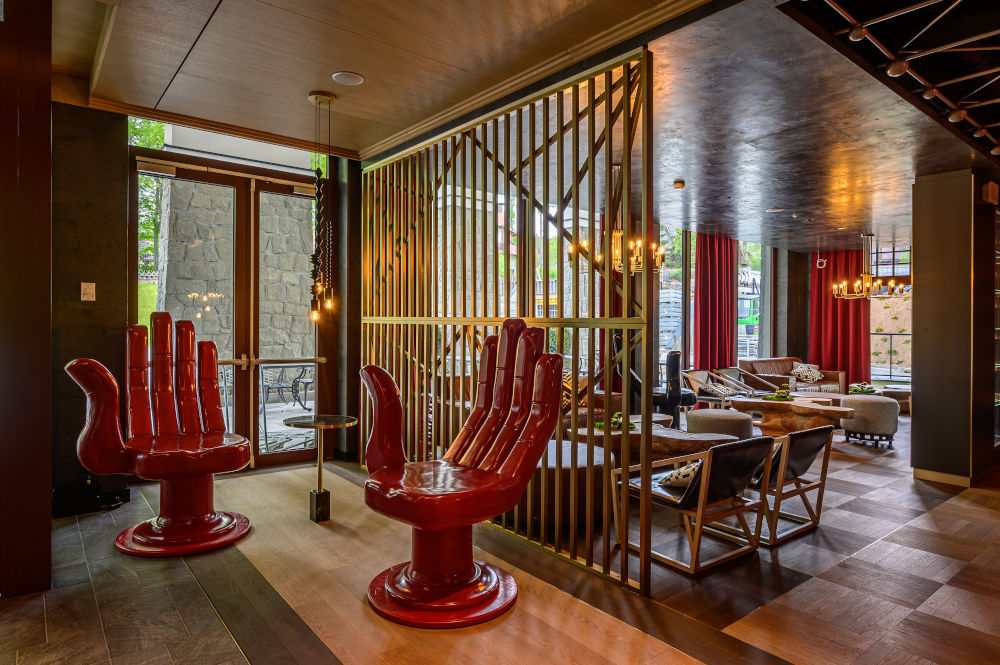
There’s nowhere better than Nosalowy Park Hotel and Spa. Nestled in the foothills of the Tatra Mountains, this luxurious resort is surrounded by timber houses and the scent of pine wood in the air. Rooms are spacious and comfortable, plus a top chef will cook for you in the on-site art-deco restaurant. The fruit-topped cakes here are impossible to resist. Plus, after a day of strenuous hiking, tense muscles can be relaxed and rejuvenated by a massage therapist in the spa.
Krakow to Wieliczka (35 mins by car)
Wieliczka: The town of salt
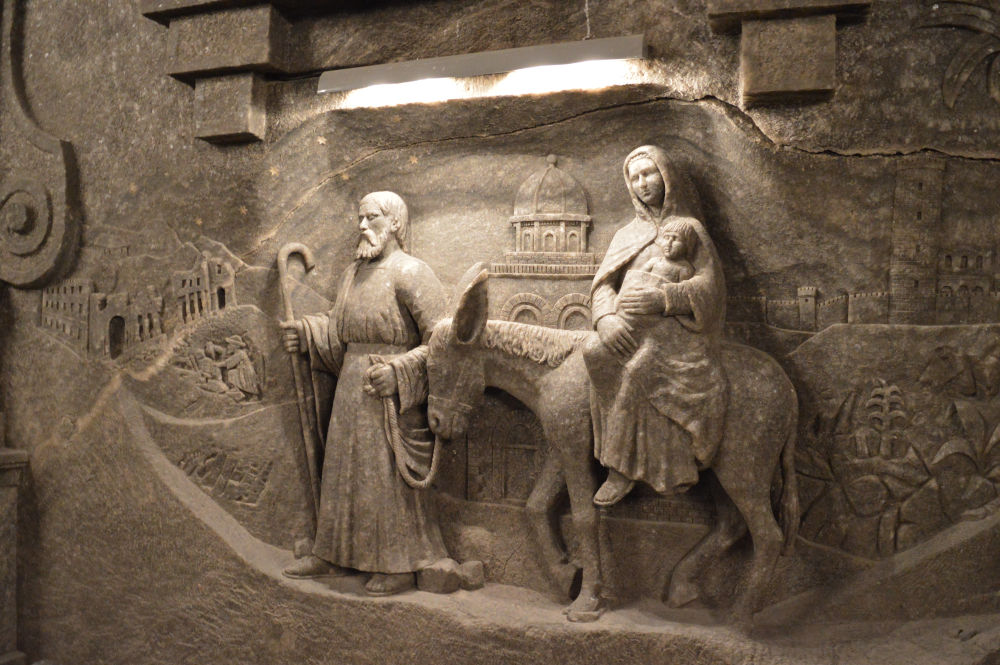
While Zakopane was all about scaling the heights of the mountains, this town is about getting deep underground – to see the secrets of the salt industry. Even better, it’s barely more than a half hour drive from Krakow. A visit to the legendary salt mine is absolutely essential – and not nearly as ordinary as it might sound. A guide can whisk you through a network of underground tunnels and chambers, the adventure often taking you as far as 300m – or more – below ground level.
Once a working salt mine, dozens of horses were hoisted down here to assist, while some miners slid down on ropes. Yet it caters entirely to tourists these days, with occasional underground concerts held inside due to the excellent acoustics. The unique micro-climate down here also offers respite from asthma and other respiratory disorders.
Underground lakes delight the eyes, as do the salt crystals sparkling on the walls. but the indisputable piece de resistance is the St Kinga chapel, lit up by “crystal” chandeliers made from salt. Intricate salt sculptures are also displayed around the cavernous chapel, depicting events such as the Crucifixion of Christ via a huge figurine of Jesus on the cross constructed entirely from rock salt.
The salt carved rendition of Leonardo Da Vinci’s ‘Last Supper’ scene is arguably even more impressive than the original painting itself!
The scenes found in the chapel took several decades to build and the result is an artistic experience like no other.
After walking through the mine, visit its restaurant – the only one in the world that is 125m underground – and try traditional Polish dishes such as roast pork knuckle, which is surprisingly delicious!
Where to stay in Wieliczka
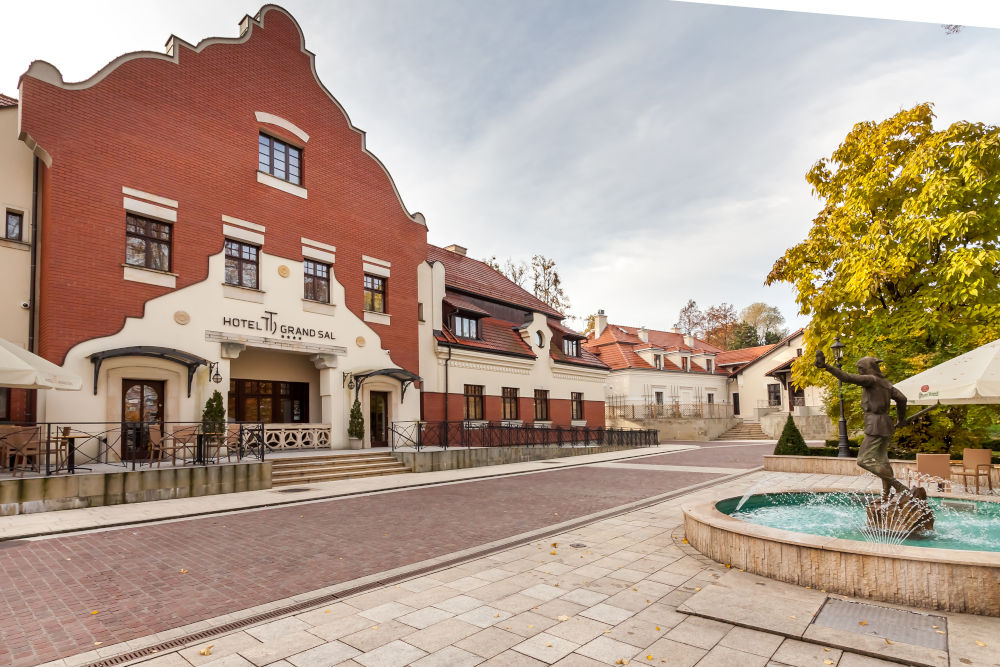
Although the mine is a mere 30-minute drive from Krakow, an overnight stay at the luxurious Grand Sal hotel nevertheless comes highly recommended. it’s located merely seconds away from the mine on foot and there’s also a salt tower which changes the composition of the air you breathe to boost the respiratory system. Even those without health conditions can benefit – and after a period of inhaling polluted city air, your lungs are likely to thank you for the refreshing change.
The hotel, surrounded by a park and leafy gardens, will set the scene for a relaxing visit.
(Wieliczka to Wroclaw – 2h50 by car)
Wroclaw: The Polish Venice
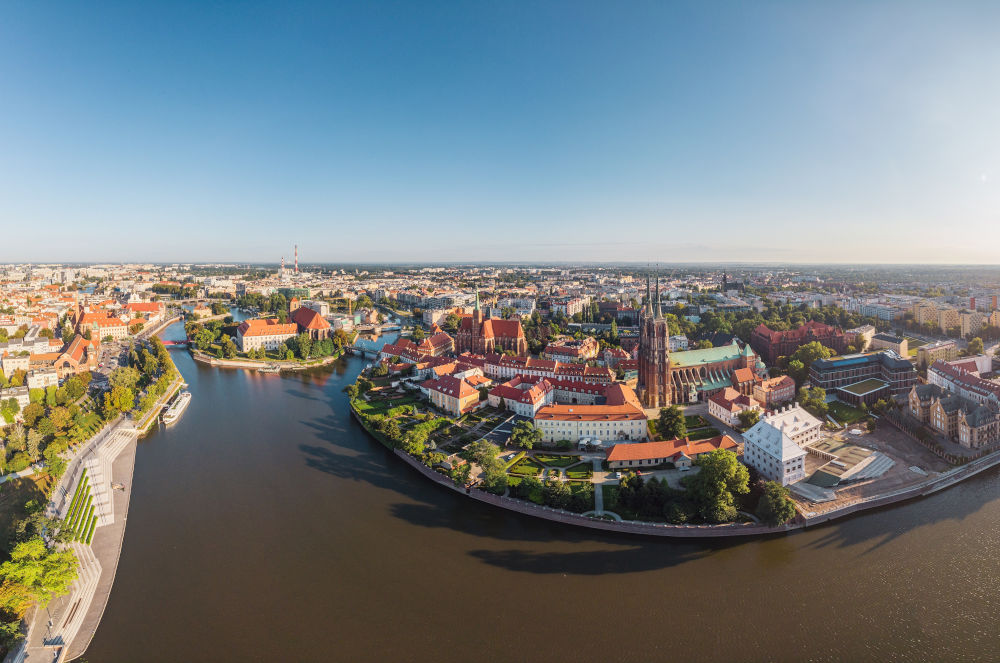
Unbelievably picturesque, Wroclaw consists of 12 small islands connected by over 100 bridges. From the imposing architecture of popular favourite Ostrow Tumski (Cathedral Island) to the baroque beauty of the historic old town and its market square, there’s enough to see to keep sensation-seekers occupied for days. A veritable Little Venice, the trump card it holds over its more famous rival is the lack of huge crowds.
Packed full of personality, the city challenges you to spot one of its hundreds of quirky gnome statues, which are heart-warmingly amusing, but also a nod to the political resistance movement in Poland which helped to bring down Communism.
Watch out as you withdraw money from the ATM – an inquisitive gnome is standing right beside you! The gnomes are everywhere. Back in 1988, 10,000 protestors descended on the old town chanting ‘Freedom for the dwarves!’ – their way of creatively expressing themselves in a former world of communist censorship.
This city rewards walkers, especially in early autumn when a crisp breeze brings an abundance of leaves swirling to the ground. For panoramas, climb the tower in the city’s oldest church, St Elizabeth, check out the stunning cathedral island and take boat trips for spectacular views.
With just as much potential for romance as Venice or Paris, yet without the overcrowding or cliches, this is a perfect way to spell the end of a perfect Polish road trip.
Where to stay in Wroclaw
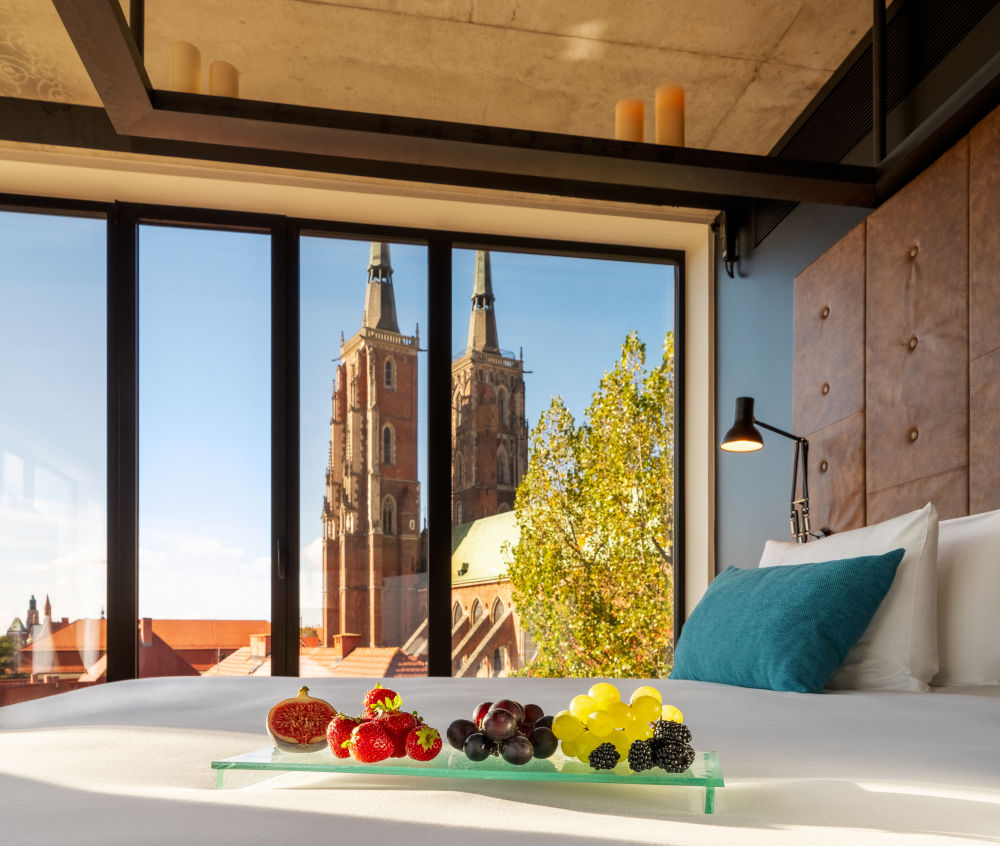
There’s no question that the ultimate in luxury can be found at MGallery’s five-star venue The Bridge. Located on Cathedral Island and offering phenomenal views a virtual stone’s throw away from the Archbishop’s Residence, there’s a great restaurant showcasing local cooking and a rooftop chill-out zone to enjoy after a day of exploration.
The icing on the cake? The medieval-style masked man who arrives to light the city’s gas lamps by hand every evening each time dusk falls. Claim a window seat for yourself in Craft restaurant at the right time and you could catch a glimpse of the ritual direct from the hotel – ask staff for details on how to secure yourself a viewing!
If you thought Krakow was a fairytale, wait until you see Wroclaw……












